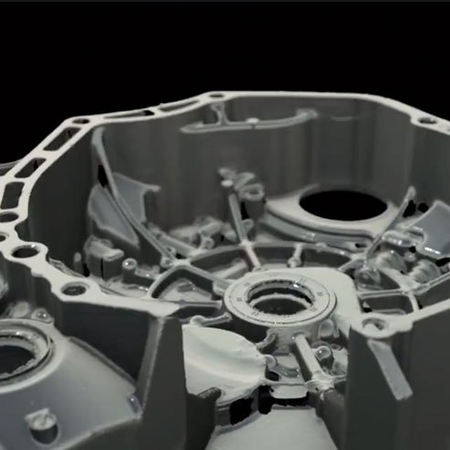“We need to make certain vendors have the best test results to ensure success,” says Miser. “But most importantly, we want to save the lives of our troops in the battlefield.”
The term “a measure of confidence” has always been considered a nebulous thing. But it becomes very real when applied to body armor testing at the U.S. Army’s Aberdeen Test Center in Maryland.
Using a FaroArm Quantum scanner and Geomagic Control 3D inspection software, the Army has decreased the uncertainty of its body armor test results by as much as ten-fold over its former caliper-based process. That translates directly into confidence according to Craig Miser, chief of the Applied Science Test Division.
“Our accuracy is significantly better now,” says Miser. “We have taken human decision out of the process. Our current process has removed sources of uncertainty and is now defendable and repeatable. ”
Accuracy is no small matter when you are dealing with products that are used to protect U.S. soldiers facing armed attacks. It’s also critical to making sure that customers are getting the maximum benefits out of testing.
“We need to make certain vendors have the best test results to ensure success,” says Miser. “But most importantly, we want to save the lives of our troops in the battlefield.”
A ballet with live ammo
Testing body armor is like an elaborate ballet involving live ammunition. The highly choreographed action takes place within a 30- to 45-minute window of time. The deadline is governed largely by the conditioned clay used as a stand-in for the human torso. If the clay is exposed to the elements too long, it loses the elasticity needed for accurate backface deformation measurement.
The process starts with frames containing clay heated to 103 degrees Fahrenheit. The clay is used to display similar impact characteristics as the human torso. An appliqué is applied to the clay so that it curves to fit the contours of the body armor placed over it.
Before the body armor plate is strapped to the clay, a pre-scan is done with the FaroArm Quantum to serve as reference data. The FaroArm Quantum is a 3D laser scanner mounted on an articulated arm. It can capture the clay surface in minutes with accuracy of .018mm (one-fifth the width of a human hair according to Faro).
Data from the FaroArm is captured on a laptop then transmitted to a workstation outside of the firing range for immediate processing in Geomagic Control software. Geomagic Control is used worldwide to save time and increase accuracy for first-article inspection, inline or shop-floor inspection, trend analysis, 2D and 3D dimensioning, and automated reporting.
While pre-scan data is being saved, the body armor is placed on the clay form, the scanning equipment moved out of the way, and the first shot fired. The body armor comes off, the scanner springs into action to capture the key backface deformation measurements, and the post-scan is sent to Geomagic Control for processing and comparison to the pre-scan data.
Automation accelerates the process
Geomagic Control automates critical procedures such as registering and merging multiple scans, removing scanning noise, smoothing data, filling holes, and transforming point-cloud data into highly accurate 3D surface models. Further accelerating the process are macros written by ATC’s Jeff Huber that work within Geomagic Control to streamline tasks specific to body armor testing.
It only takes about three to five minutes to scan and then about one minute to process the results of each shot, according to Huber.
Testing is done for both soft (vests) and hard (plates) armor at the Aberdeen facility. Hard armor plates are normally tested with a few shots; several shots are fired for soft armor testing, with two of them used for official measurement.
Both soft and hard armor generally go through two types of testing: One is a first-article inspection for a product scheduled for manufacturing and the other for verifying the effectiveness of materials and properties for products under development.
In the case of first article inspection, testing could stop after the first shot if the results show that the backface deformation exceeds performance specifications.
Game-changing accuracy
The speed of the ATC process is certainly impressive, but it’s the accuracy that is the game-changer for the Army.
“The old method of using the depth rod of a vernier caliper captured only one point,” says Huber. “Now we can characterize the entire surface and archive the digitized file for further analysis at any time.”
According to ATC lab tests, the uncertainty threshold of test results has been improved ten-fold – from 2mm with the caliper process to 0.2mm using 3D scanning and processing.
The 3D comparisons between pre- and post-scans are generated in an automated report program within Geomagic Control and sent on to the Army Project Management Office for further analysis. The results are combined with other research that leads to a better understanding of the effects of ammunition impact on the human body and improved ways of protecting soldiers’ bodies from that impact.
“We have greatly increased confidence in the accuracy of our critical backface deformation measurements that correlate to human tissue damage,” says Miser. “That benefits our contractors in developing better products, and most of all protects our soldiers who are putting their lives on the line.”
